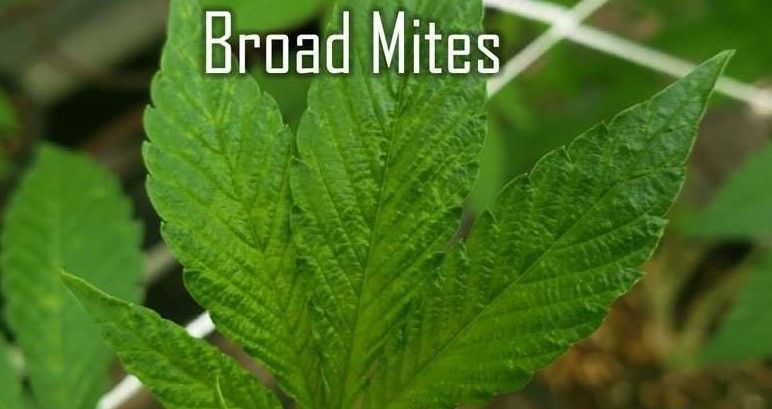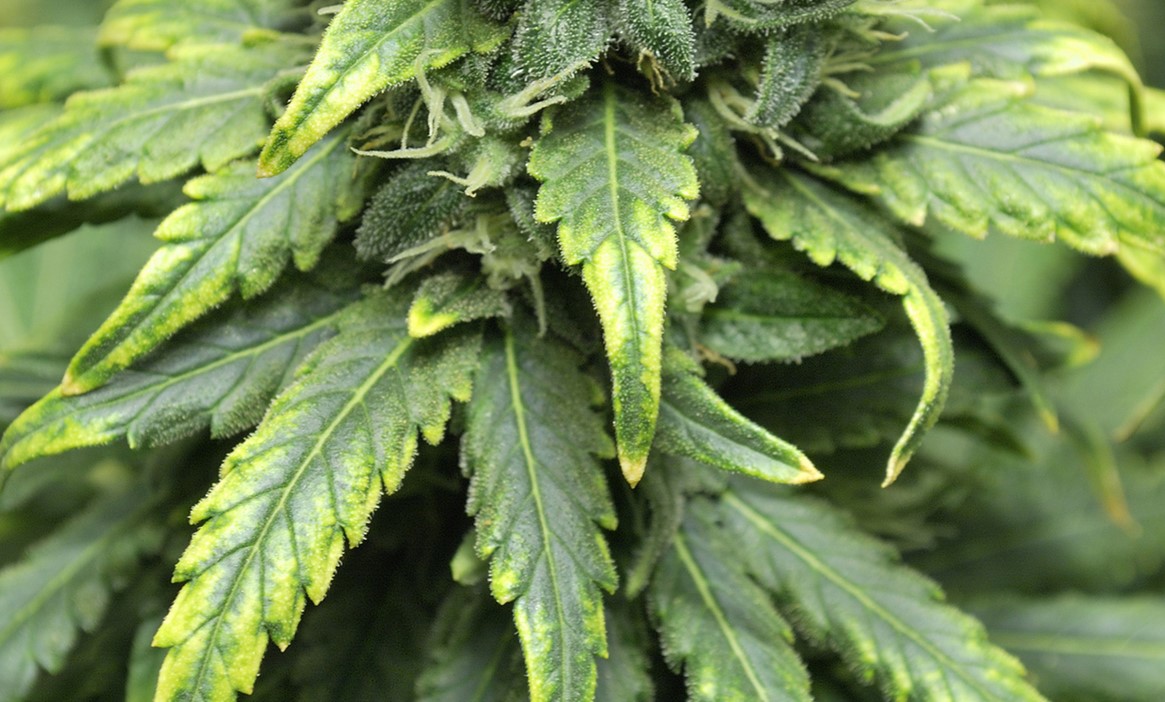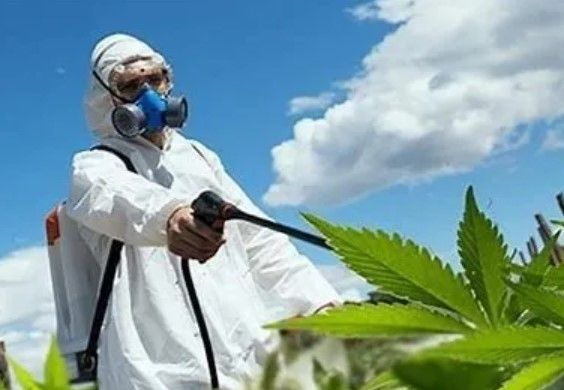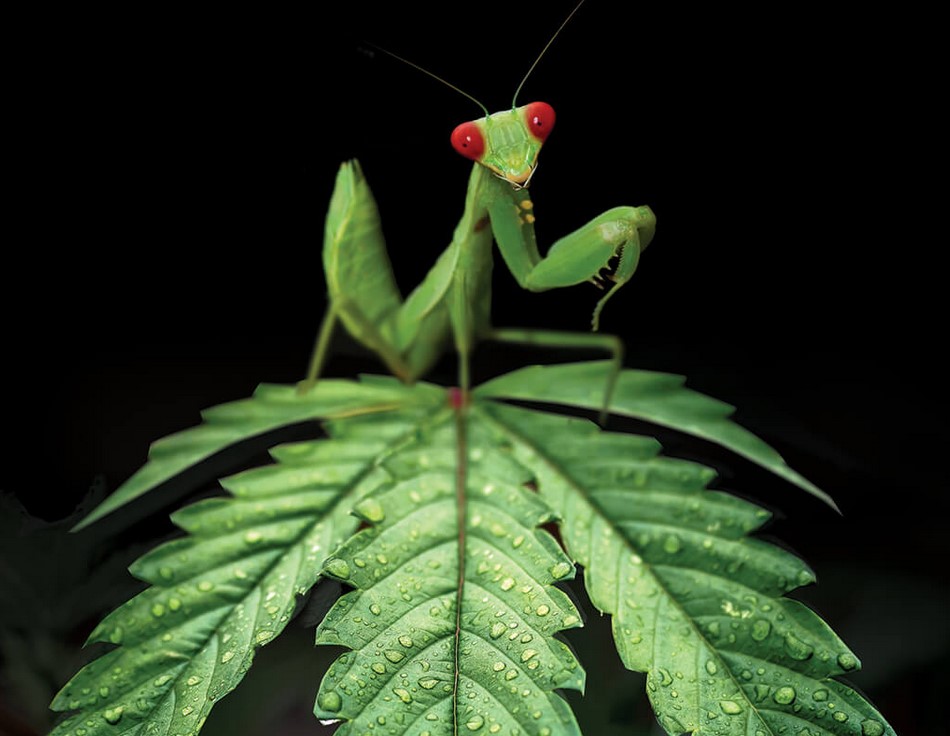You’ve likely put a lot of money into purchasing haut-quality cannabis seeds, an LED grow light, and setting up a great grow room. But if pests or diseases take over your crop, it can ruin everything you’ve worked for. Many people don’t know how to identify different pests or the best way to get rid of them. However, reading this guide will give you all the information you need to know on the subject.
Identifying the most common cannabis pests
Cannabis pests may be handled if discovered in time. When pests have had enough time to establish themselves, the more serious difficulties tend to arise. The following are some of the most difficult insects and what should be done about them.
It’s worth mentioning that many indoor growers (and greenhouse growers) now routinely add UVB supplemental lights to their grow location. The UVB emitted often has a positive effet at reducing (perhaps even eliminating) pests before they get chance to become established and is a good tool to control pests.
Another alternative is to utilize plants in your neighborhood as a natural pest control. If you discover and remove insect-damaged tissue or leaves from your plant, one useful hint is to avoid putting this waste material back in the garden. Cannabis cuttings/clones from friends are another common source of unintended insects/disease . Leaving your indoor plants outside for an afternoon in the direct sunlight has a nasty tendency of inadvertently introducing pests into your environment.
Cannabis aphids
Cannabis aphids wreak havoc on both indoor and outdoor growers. You’ll typically spot them hanging out underneath leaves, where they vary in size based upon their age and maturity.
Soap-based sprays, as well as insect predators like Ladybugs, can help reduce aphid activity. Leaving an infestation unchecked allows rapid population growth and a sticky mess on your plants that lowers yield quality/ Quantity.
Barnacles / scale insects
These creatures, which can be white or red, look similar to barnacles you might find near the ocean. They attach themselves to your plant’s stems and leaves and are also called wax scales. Like aphids, they produce sticky waste known as honeydew that covers your plants. A soap spray usuallyRemoved them but if not, a powerful water spray or neem oil will do the trick,. Another solution is releasing predatory insects such as lacewing and ladybirds into your garden.

Cannabis broad mites
The primary problem with the narrow-line white grub is that it spreads very quickly. Once established, these mites can be a major nuisance. Even with a magnifying glass, you might not notice them since they are so tiny. The tortured leaves appear to be deformed, drooping, glossy, burned, and unhealthy. Due to confusion over infestation by wide-line white grubs or other pests, growers frequently ascribe damage to pH imbalance or heat stress rather than the actual source of the trouble (i.e., the narrow-line white grub).
Specialist chemical sprays (such as Miticide sprays such as ‘Forbid,’’ Avid,’ and’IC3′), on the other hand, are frequently not utilized by cannabis farmers. Instead, neem oil, and soapy sprays are used. Neoseiulus is a helpful mite predator. Diatomaceous earth might also assist.
Caterpillars & inchworms
Caterpillars eat plant leaves, which gives rise to black droppings. To keep your plants healthy and intact, remove them. Anti-Caterpillar sprays are available; but if you value organic buds and a clean smoke, removing the pests by hand is easier.
Crickets
Crop Crickets are simple enough to remove manually with cannabis leaves. In general, crickets aren’t major pests, although ‘Mole Cricket’ may burrow into the cannabis root system and become a nuisance even though they’re rarely seen. Plant netting can be beneficial in keeping insects out of your plants.
Fungus Gnats
Fungus gnats are tiny, black insects that can be difficult to detect. Fungus gnats may hatch from their eggs in your soil and appear there after hatching. Composted wood chips might make some soils more prone to fungus gnat infestations. To minimize the risk of fungus gnats, many indoor growers use wood-free soil preparations.
Utilizing UVB supplemental lights is an effective way to get rid of gnats – and other insects. Another method that works well is using rolls of sticky fly tape. Additionally, diatomaceous earth can create a barrier which will prevent larvae from emerging out of the soil. Many growers see fungus gnats at some point during their grow cycle; however, a low-level presence doesn’t necessarily mean your crop will be ruined but it may stunt plant health and growth rates.
Grasshoppers
If you have grasshoppers eating the foliage on your plants, they are easy to remove manually. A layer of netting around your plants can stop Grasshoppers landing on them.
Leafhoppers
Leafhoppers are a type of insect that come in many colors. They feed on plant sap, which can cause damage to the leaves in the form of white, brown, or yellow spots. Leafhoppers have wings and six legs, and they can jump high distances. They’re most active during hot weather when they need moisture the most. While there are specialist sprays available to kill leafhoppers, few growers want to spraying their Cannabis plants with insecticides because it could be harmful if inhaled later. Many people prefer neem oil for its benefits, and some helpful predators – such as the Ladybird, Lacewing, and Parasitic Wasps – also enjoy it.
Leaf Miners
Leaf miners are the larval stage of mites that live within the tissues of your cannabis leaves. Their impact is visible as white wavy lines in your leaves. Neem oil or Spinosad, along with parasitic wasps known as Diglyphus isaea, are both effective treatments.
Mealybugs
Mealybugs are small, white insects that resemble wood lice. They secrete a sugary substance called honeydew, which attracts black mold and harms plant health. To get rid of mealybugs, people have sprayed them with neem oil, soapy solutions, and even alcohol—all with some success. Another solution is to introduce ladybird predators into the environment.
Planthoppers
Planthoppers are small winged insects that produce an excretion that looks like mold. They suck sap from your plants and reduce overall plant health and vigour. Infants look like baby crabs with red eyes. The usual soapy sprays or predator insects are the best approaches.
Russet Mites
Russet Mite infestations often manifest as a yellow coating on the branches and leaves of a plant, resulting in limp foliage. As the mites are relatively small and very difficult to spot, this problem is frequently misdiagnosed. The worst-case scenario is that you will need to abandon your whole crop, but usually only sprayed insecticide will be necessary. This can pose difficulties when trying to protect flowering buds intended for vaping, however. One potential solution may be using predatory mites such as Amblysieus Anderson.
Slugs / Snails
If you have slugs or snails on your plants, get rid of them as soon as possible since they will eat the leaves. Although They’re generally easy to spot and remove by hand, infestations can still happen.
Spider Mites
If you have small white ‘bite’ marks on the upper side of your leaves, spider mites likely are to blame. These pests often build webs in severe cases, and are difficult to eliminate once they’ve infested a plant.
Increase air circulation and deprive spider mites of the low humidity/high temperatures in which they thrive to reproduce. Soap sprays are useful, as are dedicated anti-mite spray. Predators and diatomaceous earth might aid, as may lower temperatures and higher humidities. Repeated annual treatments are required to eliminate persistent newly hatched mites. Predatory mites destroy spider mites effectively.
If you’re a gardener, you know that pests can ruin your plants andThrips are no exception. These small, dark creatures with long antennae can cause serious damage to foliage, which reduces the health, yield, and potency of the plant. The best way to deal with them is to avoid them altogether; once they’re established in your grow room, it’s very difficult to get rid of them.
Bright patches on leaves are a telltale sign of thrip damage. The most effective treatments include spraying with soapy water or neem oil, using diatomaceous earth, and regular inspections. One of the best ways to get rid of thrips is by enlisting the help of their natural predators – predatory mites like Orius and Amblyseius cucumeris.
Whiteflies / White fly
White flies look like tiny white moths that live on the underside of leaves. They cause damage, leaving a sticky residue that may lead to mould growth. Shaking a limb while infested causes them to take flight. Neem oil and soapy water are two solutions for treating itchy pests. Lady Birds (Lady Bugs) are an excellent choice as predator insects.

Identifying the most common cannabis diseases
Although there are many cannabis diseases, if you grow from seed (rather than clones) and keep a clean growing area, you’re unlikely to experience these problems.
Bud rot or mold
Also called Botrytis, bud rot is a heartbreaking disease that can cause your harvest-ready buds to turn into mold. To watch out for bud rot, look for dying leaves and rotting at the base of the leaves. Some ways you can avoid it are by keeping humidity low during bloom, using UVA/UVB supplemental light, increasing air flow, removing extra foliage, taking away infected areas of the plant right away, and monitoring the plant regularly. If things get really bad, you may need to harvest early.
Root Rot
Brown, slimy roots are an indication of root rot. Your plant will droop as it cannot receive the nutrition it needs. Root rot can be caused by many things including pathogens, fungi, algae, and parasites but often has similar symptoms. Hydroponic growers are more susceptible to this issue than others. Excessively hot water tanks won’t help matters nor will nutrient feed with low oxygen levels or light leaks in the root zone of hydroponic systems do any good either. If you want your plants to keep their high yield and potency, address root rot immediately. Correction strategies include adding beneficial bacteria or removing light leaks. Some growers also find success with silver-based anti-bacterial additives, hydrogen peroxide, or other specialist nutrients.
Tobacco Mosaic Virus (TMV)
TMV first appeared in a tobacco plant and has since been found in over 100 different plant species. It causes odd pale mosaic/mottled markings on leaves and twisted growth, as well as sickly looking and slow-growing plants. TMV cannot be treated and is frequently mistaken with other illnesses or concerns, making it a difficult (and perhaps exceedingly unusual) problem for cannabis producers to resolve.
White Powdery Mold
If you spot a white, powdery substance on your plant leaves or stems, it may be White Powdery Mildew (WPM). If caught early enough, WPM is reversible and treatable. Left untreated, however, the mold will kill your plants. WPM thrives in humid conditions with poor air circulation. Treatments include spraying with 33% milk solution or diluting Potassium Bicarbonate in water (1 tablespoon per gallon).

How to control cannabis pests and bugs organically
Being proactive in your garden and examining your plants frequently allows you to sidestep most problems. Also, if a difficulty does arise, catching it early is often the best solution. Even if you have a small at-home operation, conducting regular check-ups is worth the time investment. It’s also generally safer to begin with cannabis seeds in an area that you can control for cleanliness – this will help avoid issues from the beginning of your grow process.
Preventing pests on outdoor cannabis
If your plants are infested with pests, you may need to take action yourself. In many cases, the pests will have natural predators which should keep the population under control. If that’s not the case, consider buying and releasing natural predators on your plants. For severe infestations, you may need to spray your plants with a soapy detergent which will remove many of the pests.
Preventing pests in cannabis crops indoors is more difficult since, by definition, there are no natural predators to exploit a surplus of insects. As a result, your primary choices are to utilize natural predators such as Lady Birds/Lacewings and predatory mites or to be vigilant and proactive with plant treatments.
Preventing pests on greenhouse cannabis
Greenhouses are great for your plants, shielding them from the harshest weather conditions and lengthening their growing season. However, infestations can be tricky to get rid of since there typically aren’t enough predator insects around. You could always bring in more predators, of course. The dedicated greenhouse grower will also make a point to inspect their plants regularly throughout the growth process.
Unfortunately, cannabis strains that are resistant to all pests and diseases do not exist. However, certain mold-resistant outdoor cannabis strains are available. It’s always a good idea to emphasize, as it has in the past, that the greatest outcomes can be achieved when plants are cultivated from seed to harvest in the best conditions you can provide.

